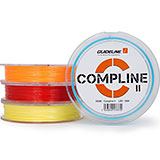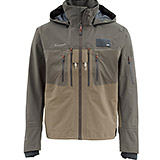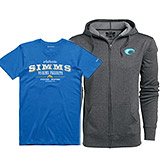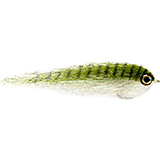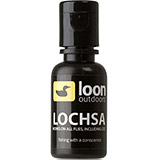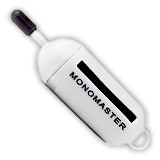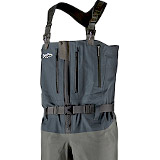Fly Fishing Knots - Part 4: Perfection Loop
Fly fishing without knots? Not possible! Whether for mounting the fly, for connecting the leader and tippet, as transition between flying line and leader or for securing the backing ... without knots it just doesn't work. In our series "Knots for Fly Fishers" we introduce you to an important knot in each video and explain the most important applications in practice.
The Perfection Loop
The Perfection Loop lives up to its name! Because this simple knot is in fact the perfect loop knot. It has a minimum of bulk, is very strong and can be tied with various materials (fluorocarbon, nylon, knotable steel or titanium etc.). One of the biggest advantages of the Perfection Loop is that the resulting loop is in line with the main line. Many other loop knots (e.g. the Surgeon's knot), on the other hand, stand slightly off to the side of the main line. Regardless of the material and the diameter of the material, the Perfection Loop is always knotted in the same way and basically consists of two overhand loops, whereby the second is finally pulled through the first. The resulting Perfection Loop can be knotted very small and is therefore also suitable for filigree setups - but is also used for predatory fishing or even for tropical fishing.
We fly fishers use the Albright knot mainly for three purposes.
Perfection Loop in practice
In practice, the Perfection Loop is used by us fly fishers to:
- connect the leader with the flying line. If your flying line has a welded loop, the Perfection Loop is the perfect way to connect your leader to the fly line. This so-called loop-to-loop connection transfers the energy into the leader very well during the cast and also allows you to change your leader quickly and easily. For example from a dry fly leader to a nymph leader. Or from a tapered nylon leader to a polyleader.

Connection between leader and fly line with the Perfection Loop
- knot a streamer, a large nymph, a sea trout fly or salmon fly to your leader. The Perfection Loop can be used as an alternative to other loop knots (e.g. a Rapala knot) to knot a fly to a fluorocarbon, monofilament, steel or titanium leader. Compared to the Rapala knot, it is easier to tie and is less bulky. In addition, the size of the loop can be adjusted before the knot is finally tightened. Basically, a loop knot has the advantage that the fly is more flexible in the loop and can play better in the water. The thicker the leader material and the larger the fly, the more advantageous a loop knot is for the action in the water. For dry flies and normal nymphs, which are presented with very thin tipepts, a loop knot is therefore not necessary. Here a clinch knot or other direct connections to the leader are sufficient. On the other hand, for very large nymphs (e.g. stoneflies), streamer fishing for trout and co., pike fishing, sea trout fishing, tropical fishing, but also salmon fishing with classic hook flies, the leader is considerably thicker. This is where the Perfection Loop really comes into its own!
- replace a Pitzenbauer ring. A so-called Pitzenbauer ring (or Tippet ring) is often used as a connection between a tapered leader and the tippet. It serves not only as a link between two materials with different diameters, but also as a predetermined breaking point: If the pressure on the leader tip is too high, the material on the Pitzenbauer ring will tear off. The more expensive tapered leader remains undamaged and can be quickly extended again with a new tip. But sometimes a leader ring is too much. The setup should be even more filigree. Then a small perfection loop at the end of the tapered leader can take over the same functions as an alternative to the Pitzenbauer ring. Especially with very small dry flies the Perfection Loop is therefore often used.
The Perfection Loop is one of the most important and best fishing knots and is one of our absolute favourites. It can be used universally and is recommended for a variety of different fisheries due to its positive characteristics. With a little practice this beautiful knot can be tied very quickly and easily - even in the dark or with cold and wet hands.
We wish you a lot of fun with reknotting and tight lines on the water!
















